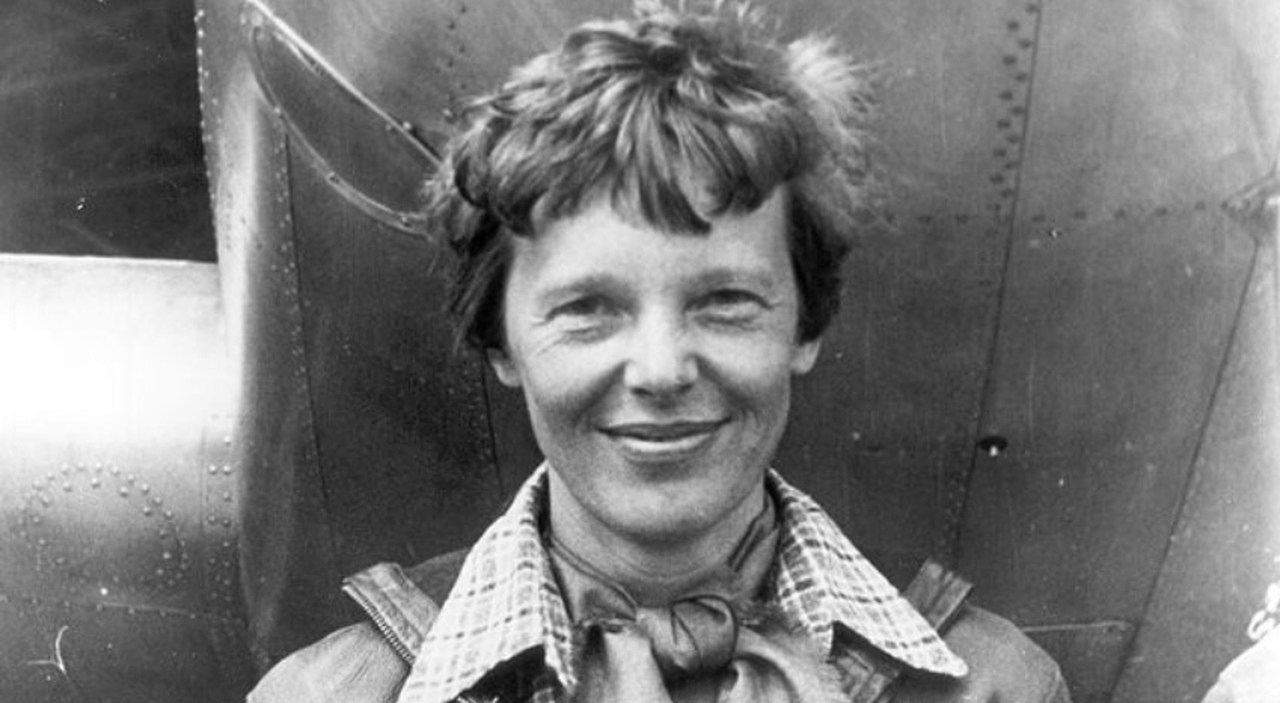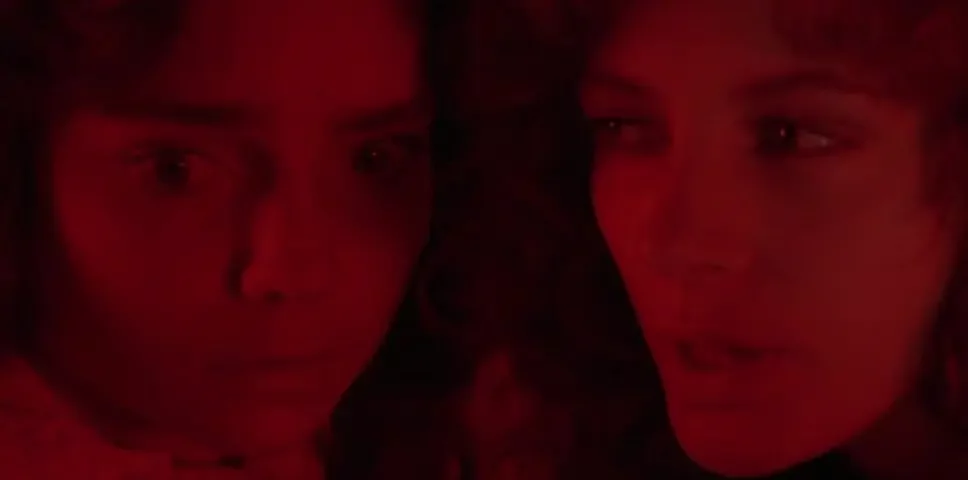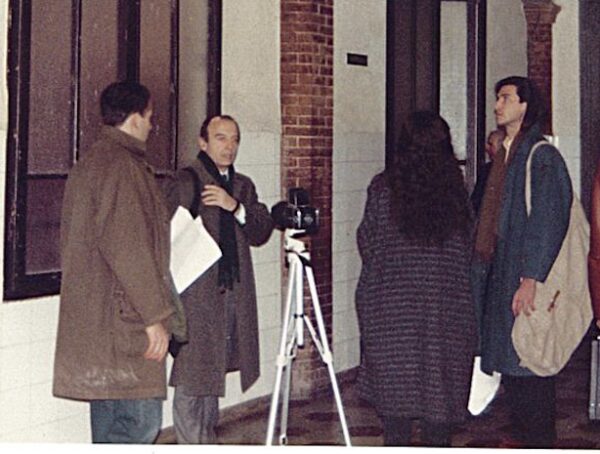
Alcuni ricercatori sostengono di avere un’immagine sonar dell’aereo di Amelia Earhart
4 Febbraio 2024
Farnese, l’architettura è potere
4 Febbraio 2024CRITIC’S NOTEBOOK
The Italian horror director is the subject of a new documentary and a film retrospective. But his artistry can be summed up in his feature directing debut, “The Bird With the Crystal Plumage.”
There’s a moment in “Dario Argento Panico,” a new documentary about the Italian horror movie maestro Dario Argento, that made me wonder if I’ve misunderstood why his assertively macabre and stylishly grotesque films so deeply give me the willies. It comes late in the film in Argento’s own words — word, actually — as he talks about what makes his scary movies scary.
“I’m looking for panic,” he says.
Panic: terror’s more dire, immediate, physically inescapable weird sister. The Italian word for panic is right there in the title of Simone Scafidi’s humanizing and absorbing documentary (on Shudder Feb. 2), and it courses through Argento’s filmography.
But I was caught off guard hearing that word on Argento’s lips, because it laid bare what I feel when I watch his films, a sensation I assumed was mere fright. Its real-world parallel is the gut punch I received one night when the lights went out in an elevator I was in, just as it came to a shuddering halt between the eighth and ninth floors. Trapped in dangling darkness, I got scared, and then rescued. But first, I panicked. We all know that feeling, but Argento feeds on it, monstrously.
ADVERTISEMENT
Starting Jan. 31, Argento fans and the curious uninitiated have a terrific chance to sample the 83-year-old master’s disquieting work when Shudder and the IFC Center in Manhattan present — here’s that word again — “Panic Attacks: The Films of Dario Argento.”
The 13-movie retrospective, which continues through Feb. 8, features the director’s best-known titles, including the 1977 supernatural dance academy shocker “Suspiria” (also streaming on Tubi), the more traditional whodunit “Deep Red” from 1975 (on Shudder), and the less heralded (and unfortunately more cornball) fare like “Dracula 3D” from 2013 (on Amazon Prime Video in 2-D). Not included is Argento’s most recent film, “Dark Glasses,” starring his actress-director daughter Asia Argento, which came out in 2022 to mixed reviews and is streaming on Shudder.
The sole non-Argento selection is a doozy: Gaspar Noé’s “Vortex” (2021), a despairing snapshot of an aging Parisian couple played by Argento and the actress Françoise Lebrun. In Scafidi’s documentary, Noé, an Argento acolyte, rightly likens seeing an Argento film for the first time to a child first sipping Coca-Cola.
But for my money, the one film to see in the series to truly get a sense of Argento’s renegade artistry is his 1970 feature directing debut, “The Bird With the Crystal Plumage.” Yes, it’s streaming on Amazon Prime Video, but it is best seen big, as it will be at the IFC Center, which is showing it in a 4K restoration.
Argento was already an established screenwriter, having penned more than a dozen films, when he wrote and directed “The Bird With the Crystal Plumage.” Filmed in Rome, it’s an extravagantly glam thriller starring Tony Musante as Sam, an American writer who witnesses a gallery owner get slashed and finds himself caught in a madman’s bull’s-eye.
The knifing is one of the most stylishly sordid assaults in horror. In just a few desperate minutes, we see a young woman in a fabulous white jumper get stabbed in a stark white gallery. A set of massive glass doors separates the victim from Sam’s help — a chilling and theatrical combination of tightly choreographed alarm and aspirational elegance. It also helps that Argento called on the composer Ennio Morricone to write a bracing score, as well as on the cinematographer Vittorio Storaro (who would later win three Oscars) to fashion the film’s handsome look.
Argento was an early student of cinematic grandeur. From dressing rooms, young Dario watched his photographer mother, Elda Luxardo, capture Italian divas, including Sophia Loren and Gina Lollobrigida, in sensuous black-and-white portraits. Argento’s father, Salvatore, was an esteemed film producer who later backed several of his son’s movies. Argento has pointed to the spectacular 1943 Claude Rains-starring version of “Phantom of the Opera” as a major early influence.
“The Bird With the Crystal Plumage” was an unexpected international box-office hit, and was the first in Argento’s bizarre “Animal Trilogy,” which includes his 1971 follow-ups “The Cat O’Nine Tails” (on Tubi) and “Four Flies on Grey Velvet” (on Plex), both to be shown at the IFC Center.
Most importantly, “The Bird With the Crystal Plumage” firmly positioned Argento, along with his Italian contemporaries and auteurs Mario Bava and Lucio Fulci, as a virtuoso of the giallo, a lurid murder-mystery genre with elements of pulp fiction and exploitation horror that shook Italian cinema in the 1970s.
Argento’s filmic world is characterized by what the film scholar Maitland McDonagh, in her definitive book “Broken Mirrors/Broken Minds: The Dark Dreams of Dario Argento,” calls “twisted logic, rhapsodic violence, stylized excess.” Glistening knives slash the air before penetrating tender flesh. Lights in ruby and other jewel tones cast menacing shadows across elegantly apportioned rooms that feel alive. The soundtrack is Italo disco and European electronica like that of Goblin, the prog-rock band Argento worked with for decades. No psychopath is fully dressed without black leather gloves.
Giallo still has a hold on horror, most vividly in the films of Peter Strickland (“In Fabric”) and of Nicolas Winding Refn (“The Neon Demon”). James Wan has said the biggest influence on his film “Saw” was Argento’s films of the 1970s.
For some, the giallo’s emphasis on style over substance and alchemy over clarity is eye-rolling. This newspaper got it right when it said “The Bird With the Crystal Plumage” evinces an “elegant, enterprising, occasionally desperate sensibility much given to fabricating sequins from non sequiturs.” From my gay vista, that intersection of the chic and the abject is what gives Argento’s films a maverick, darkly queer sensibility that remains nearly unmatched in horror.
But I’ll give the director Guillermo del Toro the last word. In “Dario Argento Panico,” he uses the apt metaphor of a hostage negotiation to describe why Argento matters.
“You come out of the bank and say, ‘I’m going to shoot a hostage,’” del Toro says. “The audience doesn’t believe you, so you shoot the hostage and the audience goes, ‘Oh my God, he’s serious.’ Argento does that.”
Time to panic.





